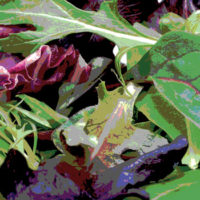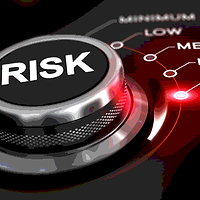Fresh fruits and vegetables are delicious, nutritious, and an important part of a healthy diet. According to the U.S. Centers for Disease Control and Prevention (CDC), eating plenty of safe fruits and vegetables can protect from some types of cancers, heart disease, stroke, and also help manage weight. Therefore, international organizations including the World Health Organization (WHO), the Food and Agricultural Organization, and CDC have encouraged people to eat more fresh fruits and vegetables.
Because fruits and vegetables are often grown in an open environment, they can be contaminated with microbiological, chemical, and physical hazards. Unsafe fresh fruits and vegetables can cause illnesses and death. In the U.S., nearly 46 percent of foodborne illnesses are caused by pathogens (such as Salmonella, Escherichia coli O157:H7, Listeria monocytogenes, Norovirus, and Hepatitis A virus) on fresh produce compared with 22 percent, 20 percent, and 6 percent for meat and poultry, dairy and eggs, and fish and shellfish, respectively. Contamination with animal feces is among the greatest fruits and vegetables safety concerns. The contamination can occur through direct contact with fruits and vegetables or indirectly by contaminating water, equipment, packing materials, or storage facilities.
In 2018, in the U.S., there were two large outbreaks associated with a single produce (Romaine lettuce) and E. coli O157:H7: It is believed to be transmitted from animal feces through contaminated irrigation water. In the first outbreak, 210 people became sick with five deaths reported. In the second outbreak, 62 people became ill. Because fresh fruits and vegetables are consumed raw, there is no kill step such as cooking that ensures safe produce. Postharvest, nonthermal technologies (e.g., chlorine dioxide gas and X-ray irradiation) can be used to improve safety and reduce the number of outbreaks associated with fresh fruits and vegetables. However, preventing contamination at the farm is the key to produce wholesome fresh fruits and vegetables. It is well known that preventing domesticated and wild animals from entering fruit and vegetable fields is a huge challenge. Harassing, harming, hunting, trapping, capturing, shooting, wounding, or killing any threatened or endangered species is prohibited. However, taking measures to limit their access to fields is required.
Therefore, food safety and health organizations including the U.S. Food and Drug Administration (FDA) and WHO have developed regulations and guidelines to minimize microbial contamination of fruit and vegetables. For example, the Food Safety Modernization Act’s Produce Safety rule sets science-based standards for growing, harvesting, packing, and holding of fruits and vegetables grown for human consumption for both U.S. and foreign (those export to the U.S.) farms. The rule focuses on major routes of contamination including domesticated and wild animals. For example, provisions § 112.81, § 112.83, and § 112.84 (which apply to outdoor areas or partially enclosed buildings, but not fully enclosed buildings) include standards to minimize the potential for biological hazards from domesticated and wild animals. Also, subpart K, § 112.112, requires that “those subject to the rule” must take all measures reasonably necessary to identify and not harvest “covered produce” that is visibly contaminated with animal excreta.
Farmers in developing countries should use these science-based standards and guidelines to produce safe fruits and vegetables. Other agencies and organizations should also integrate these standards and guidelines in their programs. The following are some science-based recommendations for farmers in managing animals to produce safe fruits and vegetables:
• Understand (attend trainings) food safety risks associated with animals, and fruits and vegetables, including potential routes for contamination (such as water runoff, wind-blown dust, etc.)
• Conduct a risk assessment, before planting, to prevent contamination of produce, agricultural water, etc. with animal feces
• Keep the conservation of natural resources (soil, water, air, wildlife, and other natural resources) in mind when establishing food safety measures to control fecal contamination associated with fresh fruits and vegetables
• Designate separate areas for domesticated animals (cattle, swine, poultry, etc.) where they cannot have access to fields
• Use practical methods (including fencing, noise deterrents, etc.) to discourage wildlife presence in those areas to prevent fecal contamination of the produce, water sources, or other areas of the farm
• Do not allow, if possible, working animals in the field when the edible portion of the crop is present, especially near harvest time
• Minimize the contact of working animals, if necessary to use them, with growing areas
• Apply waiting periods between grazing and harvest
• Exclude pets (cats can carry Toxoplasma gondii) from fruit and vegetable fields and must be excluded from fully enclosed buildings; however, pets (such as dogs) can sometimes be used as working animals that control wildlife; therefore, working dogs and cats are not prohibited, but their presence should be monitored and a corrective action plan should be established
• Inspect fruit and vegetable fields for animal fecal contamination during the growing season
• Establish Standard Operating Procedures that outline practices to take if an animal defecates in the field near or on produce occurred
• Use specific clothing and tools to activities associated animals (such as cleaning animal stalls) to minimize the movement of fecal contamination into the produce growing or packing areas
• Wash hands, after touching animals or any animal waste, to minimize the likelihood of contamination of fruits and vegetables
• Establish a preharvest assessment to determines if it is safe (such as no visible contamination with animal excreta) to harvest fruits and vegetables
• Do not harvest contaminated fruits and vegetables
• Establish corrective actions (such as establishing no-harvest buffer zones) to reduce the risks to fresh produce
• Document all activities/actions related to domesticated and wild animals
Fresh fruits and vegetables are delicious, nutritious, and an important part of a healthy diet. Therefore, international health organizations encourage people to eat at least five servings of vegetables and fruits per day. However, contaminated/unsafe fresh fruits and vegetables can cause illnesses and death. Contamination with animal feces is among the greatest safety concerns for fruit and vegetable harvest. Food safety and health organizations, including FDA and WHO, have developed regulations and guidelines to minimize microbial contamination of fruit and vegetables. Farmers in developing countries should use these science-based standards and guidelines to produce safe fruits and vegetables for themselves, their families, and local consumers. Donors and developmental organizations should also integrate these standards and guidelines in their programs.
Barakat Mahmoud, Ph.D., was an associate professor of food safety at MSU. He has provided technical assistance in food safety in several developing countries in Africa, Asia, Central America, and the Caribbean.




